
HAYKAL:
The Arabic and Persian Writings of the Bab : Introductions, Notes, Studies and Translations.
Stephen N. Lambden
IN PROGRESS 1980s-2023.
Under revision and completion - Last modified and updated 27-02-2023.
Many of the mss. texts or documents with the ![]() Pdf download image will be uploaded and made available during 2023 - often now inside the appropriate webpages or adjacent folders.
Pdf download image will be uploaded and made available during 2023 - often now inside the appropriate webpages or adjacent folders.
![]()
Biography, Bibliographies and Miscellaneous Notes and Papers.

- A Brief account of the Life and Writings of Sayyid `Ali Muhammad Shirazi, the Bab (d. 1850).
- `An Episode in the Childhood of the Bab' in In Iran: Studies in Babi and Bahá'í History vol. 3, (Los Angeles: Kalimat Press, 1986) ed. Peter Smith, pp.1-32.
 PDf. SL-Bab- Childhood.pdf
PDf. SL-Bab- Childhood.pdf - `An Episode in the Childhood of the Bab'. Revised, expanded version with Notes, Supplements and Appendicies.
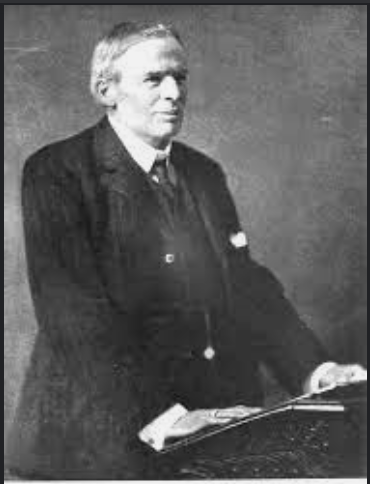
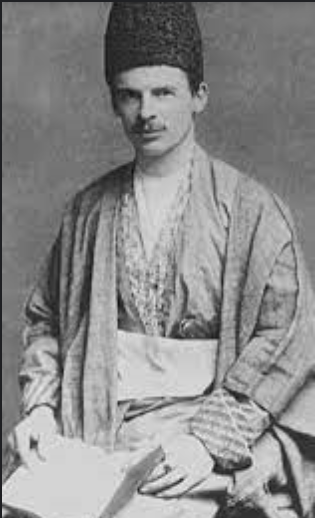
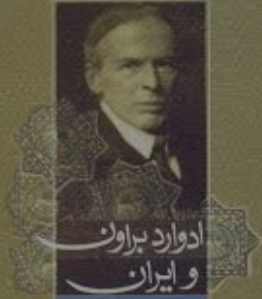
- The Bab, the Bible and Edward Granville Browne (d. 1926). Partially Revised Web version 2017+2021. PDf.
- The Bab and the Bible : Ch. 7 from the Lambden Phd thesis [1987] 2002 revised 2021 : Phd Ch.7.pdf
- The Bab and the Bible : A partial, exegetical Persian-Arabic citation of Revelation 12:6b [11: 3b], the 1260/ 1270 days/ years AH [ = 1844 CE].
- The Bab and Judaism I : The Bab and the Jews of the Early Qajar Persia, Shiraz, Bushire and elsewhere.
- The Bab and Judaism II : Possible Doctrinal Influences.
- The Bab and Christianity I : The Bab and the Christians of Shiraz, Bushire and elsewhere.
- The Bab and Christianity II : The New Testament and Christian influences in the Writings of the Bab.
- Some Christian rooted doctrines in the writings of the Bab (1819-1850): Trinity, Incarnation, Sonship and the form or Symbol of the cross.
 Uncorreted early Web1 version : Bab-Christianity.pdf
Uncorreted early Web1 version : Bab-Christianity.pdf- The Bab and the Literary and Intellectual Milieu of 1820s early Qajar Shiraz.
- Islamic Philosophy and Sufism in early Qajar Shiraz.
- The Bab and his citation of Islamic Literatures, Shi`i-Shaykhi and Others.
- The Bab and the Mercantile Outreach of his family and associates.
SELECT BABI MSS.
- Babi mss. in Persian, Middle Eastern, Indian, and other non-western localities.
- Babi mss. in British and other European Libraries.
- Edward Granville Browne (1862-1926) on the religion of the Bab.
- Babi mss. in American (USA) and Canadian Libraries.
- Babi mss. in Miscellaneous International Locations.
- Further Manuscripts and Printed texts of the writings of the Bab.
- From Alwāḥ to Ziyārā : The literaray forms and nature of the scriptural writings of the Bāb (d. 1850).
ANNOTATED BIBLIOGRAPHIES.
- Bibliography I : The Bab and the Babi Religion, Sources in Persian, Arabic and other oriental languages with Select PDfs.
- Bibliography II: The Bab and the Babi Religion -Select Western Sources with Select PDfs.
- Bibliography III. Mirza Yahya Nuri, Azali Babism, and the Neo-Azali Movements.
- Bibliography Supp. I . Pre-Islamic Abrahamic religions - Jewish, Christian and other responces to the Babi-Baha'i religions.
- Bibliography Supp. II. Islamic Anti-Babi-Baha'i Polemic - Sunni, Shi`i and Shaykhi.
THE WRITINGS OF THE BAB
- Some Notes on the Dating of Select Writings of the Bāb with a Brief Chronological Survey.
- Towards a Complete Annotated Alphabetical Listing of the Arabic and Persian Writings of the Bāb - with PDfs of select mss.
- Suggested Abbreviations for the writings of the Bab.
THE EVOLVING CLAIMS AND TITLES OF THE BAB.
- The Evolving Claims and Titles of Sayyid `Ali Muhamad Shirazi, the Bab (1819-1850),
- The Alphabetical Locus as the Point (Nuqta) of the Letter "B", its Abrahamic and Islamic backgound.
- The Alphabetical Locus as the Point (Nuqta) of the Letter "B" in the theology in the writings of the Bab (d. 1850).
- Baha'-Allah (d. 1892) as the theophanic return of the Nuqta. Some Aspects of Babi-Baha'i Theology.
![]()
THE EARLIEST WRITINGS
(1844-5).
![]()
- Tafsir Sūrat al-Baqara (Q.2) of the Bāb: Introduction, Extant mss., etc.

- Tafsir Sūrat al-Baqara (Commentary upon the Surah of the Cow, Q. 2): Extracts in Translation.
![]()
The Qur'ānic Sūrat Yusuf (Surah of Joseph). Q. 12. 
Trans. Arthur .J. Arberry (d.1969).pdf
![]()
THE QAYYUM AL-ASMA'

Qayyum al-asma' I Surat al-Mulk, Opening Page
- Towards a Complete Translation of the Qayyūm al-asmā' of the Bab (I-CXI).
- The Isolated Letters of the Qayyūm al-asmā' I-XII. 2015
- The Isolated Letters of the Qayyūm al-asmā', Tabulated and Introduced. 2015.
- Complete Pdf. from Web I = QA-Isolated Letters.pdf

- The Sūrah titles of the Qayyūm al-asmā': Gateways to the Earliest thought of the Bāb. Revised and Extended Mesa Paper Montreal, 2008.
- Some comments on specific Sūrah titles in the Qayyūm al-asmā' and within their Bābi and Islamic background. Pt. I.
- Some comments on specific Sūrah titles in the Qayyūm al-asmā' and within their Bābi and Islamic background. Pt. II.
- The Tafsir Sūrat Yūsuf / Qayyūm al asmā’ of the Bāb as the Kitāb al-Ḥusayniyya. A Draft of a paper delivered in Istanbul in 2012.
![]()
Short Studies on the Qayyūm al-asmā'.

Joseph and Jacob reunited
- The figure of Joseph in the Qayyūm al-asmā'.
- The motif of the beauty of Joseph in Islamic and Bābi-Bahā'i literatures.
- The eschatological כְּתֹנֶת פַּסִּים "coat of many colors" in Islamo-biblical literatures and in the Qayyūm al-asmā'.
- The claims of the Bāb in the Qayyūm al-asmā'.
- The Bahā'i Interpretation of the Qayyūm al-asmā.
Select Tafsir and related Writings of the Bab.
![]()

The Basmala
- The Bab and esoteric Islamic Tafsir ...
- The Islamic basmala : An Introductory Note.
- The Islamic Basmala, Towards a bibliography.
- An Introduction to the Tafsir Huruf al-basmala of the Bāb. PDfs of mss. and printed texts of the Tafsir Huruf al-basmala.

- (1] Tafsir [Ḥurūf al‑] Basmalah (Bismillāh al‑raḥman al‑raḥīm),
- Towards a translation of the Tafsir Huruf al-basmala of the Bab.
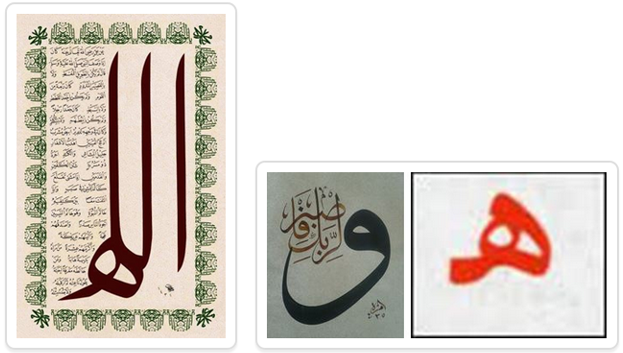
- (2) The Tafsir al-Ha' I (Commentary upon the Letter "H" I) of the Bab.
- (3) The Tafsir al-Ha' II (Commentary upon the Letter "H" II) of the Bab.
- (4) Tafsir Surat al‑Ḥamd or al‑Fātiha (The Opening, Q.1). Introduction.
- (4) Tafsir Surat al-Hamd (The Commentary on the Surah of Praise, Q.1).
- (5) Tafsir Surat al‑Baqara (`The Cow’, Q. 2) dating from early 1260/1844.- See above
- (6) Tafsir Surat Yusuf (Commentary on the Surah of Joseph, Q. 12), the Qayyum al-asma' (The Self-Subsisting Upholder of the Divine Names") or the Kitab al-Husayniyya (The Husaynid Book) - See above.
On the Surat al-Nūr and the "Light Verse" (Q. 24:35)
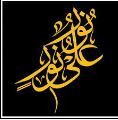
- The Qur'ānic Light Verse, Q. 24: 35, and its Islamic Interpretations.
- (7) Commentary on the āyāt al-nūr ("Verse of Light "- Qur'ān 24:35) (p. 155-171).

- Tafsir ayat al-Nūr ("Commentary on the Light Verse" Q. 24:35). 2021.
- (8)Tafsir Surat al-Nur / Ayāt al‑Nūr (Light Q. 24:35), (`the light Verse’) and a few others verses of Q. 24.

- (9). Tafsir wāw of wa'l-Sāffāt ("Commentarty on the [letter] wāw of وَالصَّافَّاتِ صَفًّا wa'l-saffāt", (Q. 37:1a, The Surah of `Those [angels] arrayed in rows') : وَالصَّافَّاتِ صَفًّا or "I call to witness those arrayed in rows". Some Introductory Notes .
- Tafsir wāw wa'l-Sāffāt ("Commentarty on the [letter] wāw of wa'l-saffāt"), Text and Translation.

- (10) Tafsir on Q. 50:16 and Q. 112:4 (for Ḥasan Waqā’ī`‑yi‑Nigār).
![]() Q. 85:22.
Q. 85:22.
- (11) The Lawh Maḥfūz ("The Preserved Tablet", Qur'an 85:22). Some Introductory Notes,
- (12) The Bāb in responce to a question about the Lawh Maḥfūz (Preserved Tablet).
- (13) Tafsir Surat Laylat al‑Qadr (Q.97 `The Night of Destiny’). Introduction.
- The Qur'anic Sūrat al-Qadr (The Surah of Destiny), Q. 97.
- The Tafsir Sūrat al-Qadr [Laylat al-Qadr] Q. 97 of the Bāb.
![]()
- (14) Tafsir Surat al‑`Aṣr (Q. 103 The Afternoon/ Era). Introduction.
- The Qur'ānic Surat al-`Asr (Surah of the Afternoon), Q. 103. Introduction and Notes.
- The Tafsir Surat al-`Asr (Surah of the Afternoon) of the Bāb. Mss. texts and Translation.

![]()
- (15) Tafsir Surat al‑Kawthar (Q. 108, `The [Eschatological] Abundance’). Introduction.
- The Sūrat al-Kawthar (Surah of the Abundance), Q. 108.
- The Tafsir Sūrat al-Kawthar of the Bāb.

- (16) The Tafsīr Sūrat al-Tawhid (The Commentary on the Surah of the Divine Unity, Q. 112).
SELECT QUR'AN RELATED WRITINGS OF THE BAB
- The Surat al-Ridwan of the Bab - Introduction and Commentary.
- The Surat al-Ridwan of the Bab - Text and Translation.
- PDf. Surat al-Ridwan.

- Sayyid `Ali Muhammad Shirazi (d. 1850 CE), the Bab, on the Isra'-Mi`raj. Introduction.
- CUL F.21 [9] Q.14. `On the Mi'rāj (Night Journey) [cf. Qur'an 17:1f] in the Land of Ṣād (Isfahān) (pp. 104-106). PDf.

- Sharḥ Kayfiyyat al-Mi`rāj (Commentary upon the modality of the Mi`rāj [of the Prophet Muḥammad]), the Risāla fī'l-jasad al-nabī (Treatise upon the [translocation] of the body of the Prophet [Muḥammad]). Lambden Translation.
SIX EARLY WRITINGS OF THE BAB


- The Ṣaḥīfa al-Ḥujjatiyya ("The Treatise of the Messianic Proof"), c. 1260 AH/1844 CE
- Bayān `Illat Taḥīrim wa Maḥarīm, A Short Treatise of the Bab on the Cause of things Forbidden and Permissible.

SAHIFAH BAYN AL-HARAMAYN
- Sahifa bayn al-haramayn (The Epistle [written] between the Twin Shrines), Introduction, Extant mss., Notes.
- Sahifa bayn al-Haramayn mss. PDfs of Arabic mss. Pdf.1
 Haramayn-Majlis-lib.ms.pdf / Pdf.2
Haramayn-Majlis-lib.ms.pdf / Pdf.2 
- Towards a Translation of the Sahifa bayn al-haramayn.
THE KITAB AL-RUH (THE BOOK OF THE SPIRIT).
- The Kitab al-ruh (Book of the Spirit), Introduction, Extant mss., Notes.
- The Kitab al-ruh, Select texts and translations.
THE KHASA'IL-I SAB`AH (THE SEVEN RELIGIO-LEGAL DIRECTIVES)
- The Risala Khasa'il-i sab`a (The Treatise of the Seven Directives), mid. 1845. Mss., Introduction.
- The Risala Khasa'il-i sab`a (The Treatise of the Seven Directives), Translation and Commentary. Pdf.

THE RISALAH DHAHABIYYAS.
- The Risalah Dhahabiyya ("The Treatise for the Dhahabi Sufis") I of the Bab
- The Risalah Dhahabiyya ("The Golden/ Dhahabi Sufi related Treatise") II of the Bab
- The Risāla Dhahabiyya ("The Dhahabi Treatise") for Mulla Jawād Viliyānī (1847 CE).
THE `ULUM AL-GHAYB ("ESOTERIC SCIENCES") : ALCHEMY, TALISMANRY AND JAFR ...

Complex talismanic configuration of the Bab.
- Talismans and Amulets in the writings of the Bab.
- Talismanic gnosis in the Sahifa bayna al-haramayn (Epistle between the two shrines) and the Khasa'il-i sab'a (The Seven Directives) of the Bab.
- Talismans and Amulets in the writings of the Bab : Notes, Translations and commentary on Specific Talismans.
- Explanation of the [eschatological-chronological implications] دائرة الايقغ , Dā'irat al-A+Y+Q-Gh (= abjad 1-10-100-1000), the Talismanic Circle of the Numerical series 1-10-100-1000") (pp. 63-65).

- Talismanic gnosis in the Kitab-i panj sha'n.

- MacEoin, Nineteenth Century Babi Talismans. SI 14 (1985), 77-98 Maceoin Talismans. pdf
- A short writing of the Bab on the Alchemical Elixir (al-iksir).
SOME EARLY KHUTBAS,
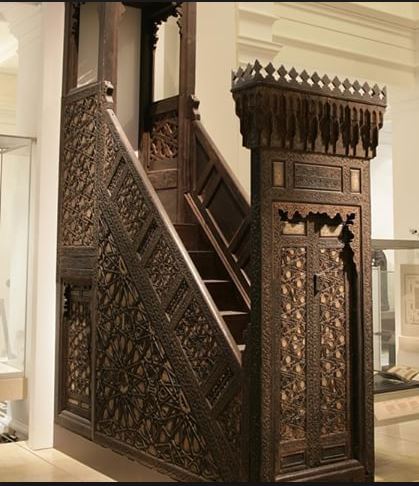
LITERARY ORATIONS, DISCOURSES OF THE BAB.
- The al-Khuṭba al-Ṭutunjiyya of Imam `Ali and the Commentary of Sayyid Kazim Rashti.
- Sharḥ al-Khuṭba al-Ṭutunjiyya of the Bab - Introduction.
- Sharḥ al-Khuṭba al-Ṭutunjiyya of the Bab - Translation.
- Revealed in Bushire՝ : Mss. = (1) Tehran, INBA 4011C, pp. 341-48 Tehran, INBA 5006C, pp. 359-63.
- Khuṭba revealed in Banakān' No surviving manuscript is known. 'Khuṭba revealed in Kanakān' : Mss. = (1.) Tehran, IΝΒΑ 4011C, pp. 351-58 (2). Tehran, INBA 5006C, pp. 355-59.
- Khuṭba on the `Īd al-Fiṭr (= 1st Shawwal 1260 at end of Ramadan = 1st October 1844?).
- Khuṭba fi'l-Masqat ("Sermon at Muscat"). Khuṭba written in Masqat [Musqat].
- Khuṭba on the sufferings of the Imam Husayn' (= Khuṭba fi'I safına).
 Lambden Translation
Lambden Translation - Three khuṭbas revealed on the way to Mecca.
- Khuṭba for Mullā Ḥusayn revealed on board ship' = 'A khuṭba revealed in Jidda at the time of the embarkation on the ship').
THE LITERARY ORATION- "SERMON" AT JEDDAH
![]()
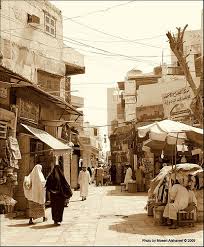
Khuṭba Jidda, Khuṭba nigh Jeddah
- Khuṭba Jidda (The Sermon nigh Jeddah). Abstract of early paper. Kh-jiddah-Abstract.pdf
- Kh-Jidda-Beta Introduction, Notes and Misc kh-jiddah-Int-Notes-Misc.pdf
- Khuṭba Jidda (The Sermon at Jeddah), Text and Translation: INBMC 91:60-74. Kh-Jiddah txt.pdf
- PDf. The Khuṭba al-Jiddah (Sermon at Jeddah) of Sayyid `Alī Muhammad, the Bāb (d. 1850 CE). Lambden Introduction and Translation c. 2006. Khutba-jiddah-Beta.pdf
- Translation printed Lawson et al. ed. A Most Noble Pattern (2012), 145-158 (Ch.9) : Khutba_al-jiddah.pdf
THE LITERARY DISCOURSE ON THE `ILM AL-HURUF. THE GNOSIS OF THE LETTERS
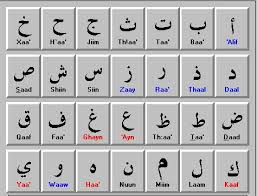
-
Khuṭba on the `ilm al-ḥuruf ("The gnosis of the Letters"). Introduction.
-
Kh- Huruf = Khuṭba on `ilm al-ḥurūf :
 Kh-Kh- `ilm al-huruf-W1.pdf
Kh-Kh- `ilm al-huruf-W1.pdf -
Text and Lambden Beta trans. Beta Web I 2007 version.
 Pdf. Khutba `ilm al-huruf.pdf
Pdf. Khutba `ilm al-huruf.pdf -
Kutba on the `ilm al-huruf ("The science of the letters") - revised 09-2014.
-
An Abstract for an Unpublished Paper : `The `Ilm al-Ḥurūf (Science of the Letters) among the `ulūm al-ghayb ("Esoteric Sciences") in the writings of the Bāb with special reference to the Qayyūm al-asmā' and the Khuṭba `Ilm al-Ḥurūf (Sermon on the Science of the Letters).
FURTHER EARLY KHUTBAS (LITERARY ORATIONS) OF THE BAB.

- The Khuṭba associated with the Tafsir Surat al-Baqara of the Bab (late 1843).

- A Khuṭba (Sermon) of the Bāb composed near Medina.

- Khuṭba revealed one stage from Medina.
- Two khuṭbas revealed near the staging-post of al-Safra'
- A Khuṭba [written] one stage from Medina
- A Khuṭba written as a preface to the Tafsīr Sūrat al-kawthar (Q. ) of the Bab (1845).

 PDf.The Khuṭba al-Jalīliyya ("The Sermon of the Divine Majesty") This Khuṭba in INBMC 67: 1-5 immediately precedes the Bab's Tafsir Surat al-`Asr. It is not listed in MacEoin's Sources.
PDf.The Khuṭba al-Jalīliyya ("The Sermon of the Divine Majesty") This Khuṭba in INBMC 67: 1-5 immediately precedes the Bab's Tafsir Surat al-`Asr. It is not listed in MacEoin's Sources.- The Khuṭba al-Jalīliyya from INBMC 67. Kh-Jaliliyya.pdf

- The Khuṭba al-dhikriyya ("The Literary Oration of Remembrance").

- The Khuṭba-yi qahriyya (The Literary Oration or the "Sermon of Wrath". Introduction, Notes and Mss PDfs

- The Khuṭba-yi qahriyya, the Literary Oration or "The Sermon of Wrath". Translation from INBMC 64:127-50 and other mss.
SOME EARLY LETTERS OF THE BAB
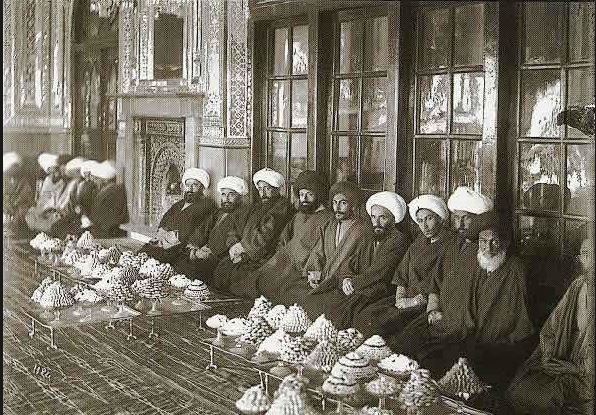
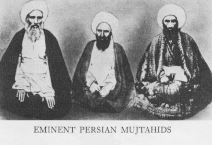
- (i) Five addressed to Mullā Ḥusayn Bushrū'ī, the first of the `Letters of the Living' (d. Tabarsī 1849 CE).
- (ii) Three addressed to Mīrzā Sayyid Ḥasan, the great Afnan and brother-in-law of the Bab (d. xxxx/xxxx CE).
- (iii) The Kitāb al-`Ulamā' ("Book of the Ulamā') primarily addressed to the divines (`ulama') of Qajar Persia and elsewhere'.

- Extract translated by Nicholas, 1934 (= Quelques Documents Relatifs au Babism), 114-118.. (from a mss. in the Bibliotheque Nationale).
- (iv) To Mullā Ḥasan Gawhar (d. 1266/1849 CE), a leading Shaykhī and early opponent of the Bāb.

- (v) To the Ottoman Sulṭān `Abd al-Majīd (d. 1861 CE). Text and Inrroduction. (1a) Partial French translation Nicholas (1934) Quelques Documents Relatifs au Babism. (2) Translation Stephen Lambden :

SELECT LETTERS TO THE FAMILY OF THE BAB
Letters to the Maternal uncle of the Bab, Ḥājī Mīrzā Sayyid `Alī (d. 1852 CE)
-
Six Letters/Tablets addressed to the maternal uncle of the Bab, Ḥājī Mīrzā Sayyid `Alī (d. 1852 CE), his guardian known as the Khāl-i A`ẓam ("the Greatest Uncle"). One of the seven martyrs of Tehran. (1) Add (6) Letter sent with Quddus to Shiraz for Hājj Mirza Sayyid `Alī. (6a) French trans. in Nicolas, Séyyèd Ali Mohammed, (1905), pp. 214-18. (vii) 2 to Ḥājī Mullā Muhammad.
- Two for Khadījah Bagum (d. 1882 CE), the wife of the Bab and cousin of the mother of the Bab. (1) The `First Letter to Khadījah Bagum, the wife of the Bab'. See Balyuzi, The Bab (1973); at the front is a good photograph of the autograph original text. (2) The Second Letter to Khadījah Bagum, the wife of the Bab.
LETTERS TO ISLAMIC AND SHI`I-SHAYKHI NOTABLES
- Letter to Muhammad Kāẓīm Khān (d. CE). (xvii) to Shaykh Khalaf (d. XXXX CE). Letter to Shaykh Sulaymān [of Muscat?] (d. CE). (xviii) to Shaykh Sulaymān [of Muscat?] (d. CE). Partly translated in Selections, pp. 35-37.Letter to the Sharīf Sulaymān of Mecca (d. CE).
- Letter to Sharīf Sulaymān of Mecca (d. CE) = (1) Text partly published in translated in Selections From the Writings of the Bab (1978), pp. 29-30.
- Three Tablets to the Sunni Ḥanbalī, Maghribī, and Ḥanafī Imāms.
- Tablet to the Kirmani Shaykhī leader Ḥājī Mirza Muhammad Karīm Khān Kīrmānī (d. 1288/1871).
- Letter to Sayyid Ibrahīm [Mahāllatī?] (d. CE).
- Letter to Sayyid `Alī Kirmānī (d. CE). Letter to Sulaymān Khān (d. CE).
- Letter to Hajji Mirza Muhammad Kārīm Khān Kirmani (d. 1871CE).

- Tablet to the Sunni exegete and scholar Abū al‑Thanā’, Shihāb al‑Dīn al‑Ālūsī (d.1270 / 1854).
- الآلوسي The Letter of the Bab to Abū al‑Thanā’, Shihāb al‑Dīn al‑Ālūsī (d.1270 /1854).
LETTERS TO SELECT LEADING BABIS
- Letter to Mina `Abd al-Bāqī Rashtī (d. CE). (xiii) to Mīrzā Sayyid Ḥasan Khurāsānī (d. CE). (xiv) to Shaykh Rafī` (d. CE).
- Two Letters/Tablets to to Mullā Ṣādiq [Muqaddas] Khurāsānī. See Nicolas 1905 (french trans.) and Afnan `Ahd-i a`la, 101 (extract from the Second Letter).
- First Letter to Mullā Ṣādiq [Muqaddas] Khurāsānī
- Second Letter to Mullā Ṣādiq [Muqaddas] Khurāsānī. Text + Trans. PDf. Bab -Khurasani No 2.pdf

- Qa'imiyya - A Letter, Scriptural Tablet of the Bab to Mullā Shaykh AIī Turshīzī entitled `Aẓīm (d. Tehran 1852).
- An Untitled Letter-Tablet of the Bab dealing with `Abd -component letters, `- b-d and other matters.
THE FOUR OR FIVE LETTERS TO MUHAMMAD SHAH QAJAR (1808-1848).
Extract from the Qayyum al-asma', Surat al-Mulk (May 23rd, 1844).
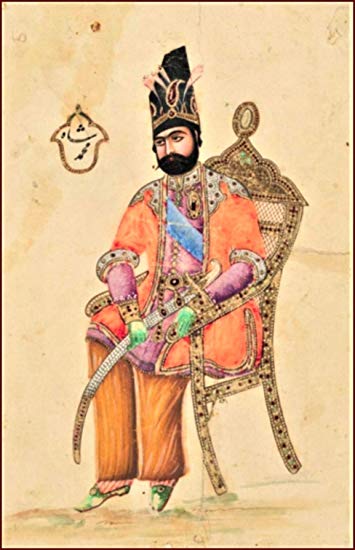

See further Qayyum al-asma', Surat al-Mulk, verses 24-29.
-
An early Letter of the Bab to Muhammad Shah Qajar (d. 5th September 1848).

-
A Letter to Muhammad Shah Qajar II - from Web I. Bab-Muhammad Shah II.pdf

-
Letter to Muhammad Shah Qajar. III Letter to Muhammad Shah Qajar. IV The Khuṭba Qahriyya - The Literary Sermon of Wrath. Letter to Muhammad Shah Qajar. V

Devotional Writings and Ziyārat-Nama ("Visiting Tablets")
- The Du`a-yi Alf ("Supplication of the Thousand") of the Bāb.

- The Bab دعای الف Du`a Alf -"The Supplication of the "Thousand" (c.1260/1845).
- Du`a-yi Ṣaḥīfa (The Supplication of the Scroll[s]) = Ṣaḥīfa-yi makhzūna ("The Treasured Scroll")
- Ṣaḥīfa al·Ḥujjatiyya ("The Scroll of the Proof"). This Arabic work consists of fourteen du`as "supplications" or "prayers" and is mentioned in both the the 1845 Kitab al-fihrist (Book of the Index) as well as the Khutba Dhikriyya within the Sahifa Radawiyya (1846). It consists of "fourteen Du`ās" ("supplications", "prayers") which "were manifest at the commencement (bad') of the [Babi] Cause (al-amr)" (Khutba Dhiktiyya Ar. text cited Afnan, 2000: 473).

-
Ṣaḥīfa a`māl al-sana ("Treatise detailing the [Religio-Devotional] Acts of the Year"). Bushire, 1261/1845. In the Khutba al-dhikriyya this text (the fifth of fourteen items) is referred to as the Ṣaḥīfa al-Fatimiyya ("The Fāṭimid Scroll-Treatise"). PDf.
 Sahifa a`mal al-sana - Tehran Majlis Lib. No.12448-c.pdf
Sahifa a`mal al-sana - Tehran Majlis Lib. No.12448-c.pdf 
SELECT PRAYERS IN REPLY TO QUESTIONS
-
(1) Prayer in reply to twenty questions. (2) Prayer in reply to al-`Alawiyya. (3) Prayer in reply to Mullā `Abd al-KhāIiq [Yazdī] (d. XXX/XXX). (4) Prayer in reply to Karbalā'ī `Alī Aṣghar (d. XXX/XXX). (5) Prayer in reply to Mullā `Abd al-Jalīl [Urūmī] (d. XXX/XXX) on the sijdat al-shukr ('thanksgiving prostration'). (6) Prayer in reply to Mīrzā Muhammad `Alī Nahrī (d. XXX/XXX). (7) Prayer in reply to Mullā Aḥmad Khurāsānī [Mu`āllim-i Ḥisārī?](d. XXX/XXX), Di`bil, and the son of Mīrzā `Alī al-Akhbarī (d. XXX/XXX). (8) Prayer in reply to Mīrzā Hādī (d. XXX/XXX) and Mīrzā Muhammad `Alī Qazvīnī (d. XXX/XXX). (9) Prayer in reply to Mullā Ibrahīm Mahallatī (d. XXX/XXX). (10) Prayer in reply to the Shi`i scholar Sayyid Ja`far Shubbar (d. XXX/XXX).
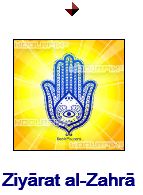
- Ziyārat al-Zahrā : for Fatima daughter of the Prophet Muhammad :

- Translation of the Ziyarat al-Zahra, the Tablet of Visitation for Fatima the Daughter of the Prophet Muhammad.
- The Tasbih ("Glorificatory Doxology") of Fatima and the Commentary of the Bab thereon.

- Sharh Tasbīḥ ("Commentary on the Glorification") of Fāṭima Zahra (d. 11/633).

- Introduction to the Imami Shi`i Lesser and Greater Comprehensive Ziyara, Visitation Tablets, along with those of those of the Bab.

- The texts of the two main Imami Shi`i Comprehensive al-Ziyara texts deriving from the Imams.
- al-Ziyāra al-jāmi'a al- şaghīra ("The Lesser Comprehensive Visiting Tablet") of the Bab. Translation. PDf. Ziyarat JS - Majlis library Tehran No.12448.pdf

- As Chapter 1 of Risāla furū` al-'adliyya : (1) Tehran, INBA 5006C, p. 2. (2) Majlis Library ms.
- al-Ziyãrat jāmi`a al-kabīra ("The Greater, Comprehensive Visiting Tablet") of the Bab. Translation, PDf. Ziyarat JK-Tehran-Majlis Lib_Ms_No.12448.pdf

- The Ziyarat-Nama (Visitation Supplication) of the Bab for Shaykh Aḥmad ibn Zayn al-Dīn al-Aḥsā’ī (d. 1241/1826).

- The Du`a al-Ḥājat
- An Acrostic Supplication of the Bāb for the fulfillment of one’s wishes.

- Du`a Tawassul (The Supplication of the Fervent Plea).

- The reply of the Bab to Questions of Mirza Muhammad Zavarih [Zawara].

- A Letter for Mīrzā `Ali Muhammad al-Mudhahhib (The Goldmith, Guilder) or Risala fi Du`ā al-sabāḥ. PDf. INBMC 40: XXX-XXX =
 Mudhahhib INBMC 40.pdf
Mudhahhib INBMC 40.pdf 
- Jawāb al-masā'il : Replies to forty one Questions.

The Bab and Select Shi`i Hadith Texts
The Earliest Period May 1844 - September 1846
Commentaries on Islamic traditions or Hadith Literatures.
Ḥadith are of the greatest significance in Sunni and Shi`i Islam. The word Ḥadith can indicate a textual tradition which sets down something of doctrinal or practical religious significance allegedly related to the Prophet Muhammad or to one or more of the Twelver Imams. It's text (Ar. matn) was often initially orally transmitted through a possibly lengthy and sometimes complicated and controversial chain of transmitters (Ar. isnad).
- Tafsīr Ḥadith al-Jāriyya on the `ilm al-ghayb (Knowledge of the Unseen), Early 1260 / 1844?
- Tafsīr Ḥadith `Naḥnu Wajh Allāh' ( "We are Face of God").

- Tafsir Nahnu Wajh-Allah (Commentary on the Hadith `We are the Face of God') TBA ms. 6006C, 69-72.
- BAYĀN Dar Jabr wa Tafwīḍ = "A Short Treatise of the Bab explaining the Ḥadīth of Imam Ja`far al-Ṣādiq that there is neither Jabr ("Foreordination") nor Tafwīḍ ("Freewill") for the matter is a situation (al-amr) betwixt two circumstances (al-amrayn). PDf.

- An Exposition of two Hadith Texts, `On Living in Both Worlds' and `On the Hadith of `Ama' for Sayyid Yahya Darabi. PDf. INBA ms. 6007C , pp.1-16. PDf. Bab-Vahid 6007C.pdf Expanded Annotated Photocopy: PDf. Bab-Vahid 6007C-exp.pdf

- The Commentary of the Bab on the Hadith, "Every Day is.`Ashurā’", The “tenth” of Muḥarram, the date of the martyrdom of Imam Ḥusayn (in 61 AH or 680 CE). PDf. INBMC 67:141-3.
- Extracts from Islamic and Early Shaykhi Commentaries upon forms of the Delphic Maxim. The Commentaries of Shaykh Ahmad upon Islamic forms of the Delphic maxim. The Commentary of the Bab upon an Islamic form of the Delphic maxim.
- Tafsīr Ḥadith `Man `arafa nafsa-hu fa-qad `arafa rabba-hu' ("Whoso knoweth his self assuredly knoweth his Lord").
- (1)Tafsīr Ḥadith al-Ḥaqiqa I: Introduction, the Shi`i Origins and Commentaries.
- (1) Tafsīr Ḥadith al-ḥaqīqa I Introduction, the Shī`ī Origins and Commentaries.
- Texts and Translations of the Ḥadīth al-Ḥaqīqa.
- (2) Tafsīr Ḥadith al-ḥaqīqa II : Shaykh Aḥmad al-Ahsāī and Early Shaykhism.
- Tafsīr Ḥadith al-Ḥaqiqa II : Shaykh Aḥmad al-Ahsāī and Early Shaykhism.
- Shaykh Aḥmad al-Aḥsā’ī on an Islamic form of the Delphic Maxim - Introduction
- Shaykh Aḥmad al-Aḥsā’ī on an Islamic form of the Delphic Maxim with extensive Commentary on the Hadith al-haqiqa - Annotated Translation.
- (3) Tafsīr Ḥadīth al-Ḥaqīqa, III : The Commentary of the Bāb upon the Ḥadīth al-Haqiqa.
- (3) Tafsīr Ḥadīth al-ḥaqīqa, III : the Commentary of the Bāb upon the Ḥadīth al-ḥaqīqa
- (4) The Ḥadīth al-Ḥaqīqa (Tradition Regarding Ultimate Reality) IV : In the writings of the Bab, early Babis and the writings of Baha'-Allah and his successors.
- (4) Tafsīr Ḥadith al-ḥaqīqa IV : Further writings of the Bāb, Early Babis, Baha'-Allah and his successors.
- Tafsīr Ḥadith. Tafsīr Ḥadith Tafsīr Ḥadith = Tafsīr Ḥadith = Tafsīr Ḥadith
- Farid Radmehr, شرح حدیث کنت کنز از حضرت اعلىٰ (A Study in the Báb’s Commentary on "Hidden Treasure") in سفينه عرفان دفتر دهم, (Safinah-yi `Irfan, vol 10), pp. 38-73 (© 2007, ‘Irfán Colloquia). PDf. Radmehr-Treasure.pdf
♦
Kitāb al-Fihrist ("The Book of the Index").
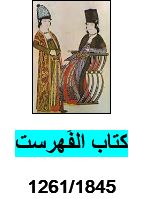
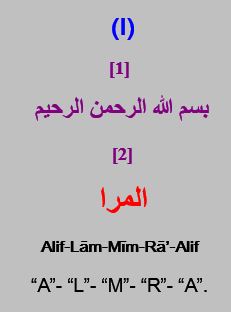
- The Kitāb al-Fihrist ("The Book of the Index"). Extant mss. Introduction and Translations.
- The Kitāb al-Fihrist ("The Book of the Index") . Mss. Text and Translation.

THE SHARH DU`A AL-ZAMAN AL-GHAYBA OR SAHIFA JA`FARIYYA
- The Sharḥ Du`ā’ Zamān al-Ghayba or the Ṣaḥīfa Ja`fariyya of the Bāb.
- Ṣaḥīfa Ja`fariyya = Sharh Du`a al-Ghayba, Introduction, Extant mss.
- Pdfs of mss. of the Ṣaḥīfa Ja`fariyya = Sharh Du`a al-Ghayba.

- Translations from the Arabic text of the Ṣaḥīfa Ja`fariyya = Sharh Du`a al-Ghayba.
THE TABLETS TO THE EIGHTEEN LETTERS OF THE LIVING+
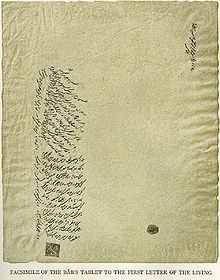
The Letters of the Bab to the Ḥurūf al-Ḥayy (`Letters of the Living')
حروف الحي
The Beta translations - Stephen Lambden. UC Merced. 2021.
The Ḥurūf al-Ḥayy, `Letters of the Living' and their numerical order are generally listed below as they are associated and listed in the Muhammad Nabil-i Zarandī (d.1892 CE) volume as redacted by in English by Shoghi Effendi as The Dawn-Breakers (1st ed. 1932). Other sources occasionally offer alternative, names, identifications or order of `Letters of the Living'. In their original Arabic the eighteen or nineteen texts are addressed to individual haykal (pl. hayakil), or (loosely) pentadic embodiments or Temples. The recepients of these eighteen or nineteen texts are for the most part not named though in No.18 Quddus is explicitly mentioned.
Facsimile colour photographs of these letters or alwāḥ (scriptural Tablets) of the Bāb in his own handwriting and sealed with his seal with the inscription,(= عَبْدُه الذِكْر `Abdu-hu al-Dhikr', `His Servant, the Remembrance') are printed in Shoghi Effendi's re-creation ("translation" of Pt.I) of the Tarikh-i Zarandi , entitled by the Baha'i Guardian as The Dawn-Breakers (1st ed. 1932). The `Tablet to the First Letter of the Living' is translated in `Selections From he Writings of the Bab (Haifa: BWC., 1976 [82]), pp. 9-10 and that to man yuẓhiru-hu Allāh (`Him whom God shall make manifest') understood by Baha'is to refer to Baha'-Allah on pp. 3-5 (+6-8 another Tablet; see below). These twenty or so Tablets appear to date from the first-second or earliest years (1260-1262 = mid. 1844-1846) of the Bab's six year prophetic mission (mid. 1844-mid.1850 CE), though perhaps not to the time when he first dispatched the 'Letters of the Living' on their mission of proclamation in summer 1260/mid.1844. It is hoped to fully translate these texts once their original Arabic has been tentatively established. A few divergent readings are likely to persist. In this latter respect I have been grateful for the generous, insightful help of the late Dr. Muhammad Afnan (d. Canada, 2017).
- The Scriptural alwāḥ (Tablets) of the Bāb to the Ḥurūfāt al-Ḥayy (`Letters of the Living'). An Overview of the List.
- Mullā Ḥusayn Bushrū'ī, the Bab al-Bab (Gate to the Gate), Some Biographical and Bibliographical Notes and Studies.
- [1] Tablet to the First Letter of the Living, ملا حسين بشروئي Mullā Ḥusayn Bushrū'ī (c. 1813-d. [Ṭabarsī] 1265 /1849) a devout Shaykhī entitled, Bāb al-Bāb (the Gate of the Gate). Trans. Taherzadeh, SWB: 9-10. PDf.
- [2] Tablet to the Second Letter of the Living, Muhammad Ḥasan Bushrū'ī (brother of [1] (d. Ṭabarsī 1265 /1849). Lambden Trans. PDf.

- [2A] Tablet to the Second Letter of the Living as Mulla `Ali Bastami (d. Istanbul c. 1264 /1846)-see [4] below
- [3] Tablet to the Third Letter of the Living, Muhammad Baqir Bushrū'ī (d. Ṭabarsī 1265 /1849). Lambden Trans. PDf.

- [4] Tablet to the Fourth Letter of the Living, Mulla `Ali Bastami (d. Istanbul c. 1264 /1846). Lambden Trans.
 .
. - [5] Tablet to the Fifth Letter of the Living, Mulla Khuda-Bakhsh Quchani. PDf.

- [6]Tablet to the Sixth Letter of the Living, Mulla Hasan Bajistani. PDf.

- [7] Tablet to the Seventh Letter of the Living, Sayyid Husayn Yazdi (d. 1852). PDf.

- [8] Tablet to the Eighth Letter of the Living, Mulla Muhammad Rawdah-Khan Yazdi (d. 12XX/18XX) .

- [9] Tablet to the Ninth Letter of the Living, Shaykh Sa'id / Sa'en-i Hindi of Multan,India-Pakistan.

- [10] Tablet to the Tenth Letter of the Living, Mulla Mahmud Khu'i (d. Ṭabarsī 1265 /1849).

- [11] Tablet to the Eleventh Letter of the Living, Mulla `And al-Jalil Urumi (Urdubadi) (d. Ṭabarsī 1265 /1849).

- [12] Tablet to the Twelfth Letter of the Living, Mulla Ahmad Maragha'i (d. Ṭabarsī 1265 /1849).

- Mulla Muhammad Baqir Tabrizi (d.Ustanbul c.1881), the Thirteenth Letter of the Living.

- [13] Tablet to the Thirteenth Letter of the Living, Mulla Muhammad Baqir Tabrizi (d. Istanbul c. 1881).

- From a Tablet of the Bāb to Mullā Muhammad Baqīr Tabrīzī (d. Istanbul c. 1881 CE) about, the messianic and theophanic figure `Man Yuzhiruhu Allah' (Him whom God shall make manifest. Bab-Tabrizi-.pdf

- Arabic and Persian text from Gulpaygani, et. al. Kashf al-ghita App. I. Bab-Tabrizi-Txt.pdf

- [14] Tablet to the Fourteenth Letter of the Living, Mulla Yusuf Ardabili (d. Ṭabarsī 1265 /1849).

- [X] A Tablet of the Bab to the erudite mujtahid and possibly crypto-Babi `Abd al-Wahhab Qazvini (d. c. 1265/1847 or c. 1270/1853) as transmitted by Muhammad Kazim Samandar (d.1918) in his Tarikh,
- [15] Tablet to the Fifteenth Letter of the Living, Mulla Hadi Qazvini (d. 18XX ). Lambden PDf.

- [16] Tablet to the Sixteenth Letter of the Living, Muhammad `Ali Qazvini (d. Ṭabarsī 1265 /1849).

- [17] Tablet to the Seventeenth Letter of the Living, Fatima Baraghani, Tahirah, Qurrat al-`Ayn (d. September 1852). PDf.

- A Letter of Tahirah, Qurrat al-`Ayn to Mulla Husayn Bushru'i, Jinab-i Bab al-Bab (The Gate of the Gate), 2020.


MUHAMMAD `ALI BARFURUSHI, QUDDUS AND HIS WRITINGS.
- [18] Tablet to the Eighteenth Letter of the Living, Muhammad `Ali Barfurushi, Quddus (the Most Holy) (d. May, 1849). PDf.

- Select writings of Mulla Muhammad `Ali Barfurushi, Quddus (d. c. 16th May, 1849)., Texts and Translations:
- I.
- II III. IV.
- A Ziyarat-Namah of the Bab for Mulla Muhammad `Ali Barfurushi, Quddus (d. c. 16th May, 1849).

- [19] Tablet to the Nineteenth Haykal or Living of the Living,the Bab himself (c.1266/1850),

♦
MAN YUZHIRU-HU ALLAH - THE EVER RETURNING BABI MESSIAH FIGURE.
- Two Alwah (`Scriptural Tablets') of the Bāb addressed to the Babi Messiah Figure Man Yuẓhiru-hu Allāh, `He Whom God shall make manifest'. PDf. SWB.

- Man yuẓhiru-hu Allāh, `Him / The One whom God shall make manifest’ after Man yuẓhiru-hu Allāh in successive future eras. November 2020.

![]()

Select Writings of the Bab dating to the Isfahan Period
(September 1846-> March 1847 CE)
- The Qur'ānic Surat al-`Asr (Surah of the Afternoon), Q. 103. Introduction and Notes.
- The Tafsir Surat al-`Asr (Surah of the Afternoon) of the Bāb. Mss. texts and Translation.

- The Letters to Manūchihr Khan Governor of Isfahan, Mu`tamid al-Dawla (d. 1847).
- Risāla fī'l-nubuwwa al-khaṣṣah (The Treatise on the Specific Prophethood [of Muhammad). Introduction.
- Pdfs of texts of the Risāla fī'l-nubuwwa al-khaṣṣa.

- Translation of excerpts from the Risāla fī'l-nubuwwa al-khaṣṣa.
- al-Lawāmi` al-Badī` ("The Wondrous Brilliances").
- Introduction, Extant mss. and Translations.

- Letter to Tafsir for to Mīrzā Ḥasan Waqāyī` Nigār. Introduction and translation.
- PDfs. Waqayi-INBMC 40.pdf

- The Ṣaḥīfa‑yi `adliyya ("Treatise on Justice").

- Risāla furū` al-`adliyya ("The Treatise on the Branches of Justice") Introduction, Extant mss. and Translations.

![]()
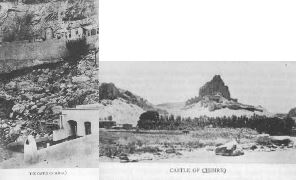
THE LAST YEARS IN PERSIAN ĀDHIRBĀYJĀN : AT MĀKŪ AND CHIHRĪQ
(March 1263/1847-> 1266/ July 9th 1850 CE)
DALA'IL-I SAB`AH - PERSIAN AN D ARABIC
- The Dala'il-i Sab`ah (The Seven Proofs), Persian. Introduction and Notes.
- The Dala'il-i Sab`ah (The Seven Proofs), Persian. Extant mss. Texts and Translations.

- The Dala'il-i Sab`a (The Seven Proofs), Arabic Introduction and Notes.
- The Dala'il-i Sab`a (The Seven Proofs), Arabic. Extant mss. Texts and Translations.
- PDf. Ar.-7 Proofs.pdf

THE PERSIAN AND ARABIC BAYANS
![]()
- The Persian Bayān Introduction, Extant mss. and Translations.
- Some PDfs of mss. and printed texts of the Persian Bayan:

- English and French translations of portions of the Persian Bayan:
 .
. - Edward G. Browne Summary of the contents of the Persian Bayan:

- The Exordium to the Persian Bayan. Trans. MacEoin + Notes.
- I The First Unity (al-wāḥid al-avval).
- II The Second Unity (al-wāḥid al-thani).
- III The Third Unity.
- IV The Fourth Unity.
- V The Fifth Unity.
- VI The Sixth Unity.
- VII The Seventh Unity.
- VIII The Eighth Unity.
- IX The Ninth Unity.
THE ARABIC BAYAN
![]()
![]()
- The Arabic Bayan : Introduction, mss. Printed texts and Translations.
- Towards a critical edition of al-Bayan al-`Arabi (The Arabic Bayan).
- Some PDfs of mss. and printed texts of the Arabic Bayan:
- PDf. Ms. Atatürk Library in Istanbul: Atatürk Kitaplığı, Istanbul, OE_Yz_1724 : Ar-Bayan-Ataturk 1724.pdf (Thanks to Dr. Necati Alkan).

- The complete text printed in 1381/1962 in al-Babiyun wa'l-Baha'iyun.pdf

- I The Arabic Bayan (al-wahid al-awwal), Prolegomenon and Persian Synopsis.
- Arabic Bayan 1 - Web I 2009-10. PDf. Ar-Bayan I Web I.pdf

- II The Second Unity (al-wāḥid al-thānī).
- Arabic Bayan II - Web I 2009-10. PDf. Ar-Bayan II Web I.pdf

- III The Third Unity (al-wāḥid al-thālith).
- Arabic Bayan III - Web I 2009-10. PDf. Ar-Bayan III Web I.pdf

- IV The Fourth Unity.
- Arabic Bayan IV - Web I 2009-10. PDf. Ar-Bayan IV.pdf

- V The Five Unity.
- Arabic Bayan V - Web I 2009-10. PDf.
- VI The Six Unity.
- Arabic Bayan VI - Web I 2009-10. PDf.
- VII The Seventh Unity.
- Arabic Bayan VII - Web I 2009-10. PDf.
- VIII The Eighth Unity.
- Arabic Bayan VIII - Web I 2009-10. PDf.
- IX The Ninth Unity.
- Arabic Bayan IX - Web I 2009-10. PDf.
- X The Tenth Unity.
- Arabic Bayan X - Web I 2009-10. PDf.
- XI The Eleventh Unity.
- Arabic Bayan XI - Web I 2009-10. PDf.
SELECT LATER LETTERS AND WRITINGS OF THE BAB.
LIST UNDER REVISION
-
[01] Reply to one of the believers (pp.1-3). [02] Unspecified (pp.3-9). [03] Reply to a question of Sayyid Yaḥyā Darābī al-Wāḥid al-Awwal (`The First Wāḥid') (pp.9-26). [04] In commentary on a statement of Sayyid Kāẓim Rashtī (d.1259/1843)(pp.26-35). [05] To Sayyid Yaḥyā Darābī al-Wāḥid al-Awwal (`The First Wāḥid') (pp.35-44).
-
[06] تفسير الواو فی كلمة والصافات = Commentary upon the letter wāw (و) in the opening phrase of the first verse of the Sūrat al-Ṣāffāt, wa'l-Ṣāffāt, "By those arrayed in rows!" ("Qur'ān, 37:1a) (p. 44-60). In this work the Bab mentions al-jabal al-shadīd ("the Severe Mountain") which is one of the ways he referred to Mākū, the place of his imprisonment in Persian Ādhirbāyjān in 1848-9. [07] Continuation and conclusion of No [6] above (pp. 60-63).

-
[08] Explanation of the [eschatological-chronological implications] دائرة الايقغ , Dā'irat al-A+Y+Q-Gh (= abjad 1-10-100-1000), the Talismanic Circle of the Numerical series 1-10-100-1000") (pp. 63-65).

-
[09] Answer to Shaykh Nāṣir al-Dīn Karbalā'ī, written in 1264/1848 (pp. 65-77).
-
[10] On the بسيط الحقيقة Basīṭ al-Ḥaqīqa ("The Unicity-Simplicity of Reality [is all things]" of Mulla Sadra al-Din Shirazi (d. Basra, c. 1050 /1640-1), (pp. 77-88).

-
[11] Answer to the Mu`tamad al-Dawla, Manūchihr Khān Gurjī (d. 1264/1847) one time Governor of Isfahan (pp. 88-93).

-
[12] Answer to the Governor of Shūshtar (pp. 93-100). [13] Answer to a student on the queries in the Qur'ān (pp.100-104). [14] On the Mi'rāj (Night Journey) [cf. Qur'an 17:1f] in the Land of Ṣād (Isfahān) (pp. 104-106).
-
[15] Explanation of a tradition of the Imam Riḍā' (pp. 106-108). [16] Answer to Ḥājjī Muhammad, written from Mākū (pp. 108-111). [17] Answer to an enquirer in Isfahān (pp. 111-115). [18] Answer to Sayyid Asadu'llāh of Qazwīn (pp. 115-116), dated Jumādā 1, 1263/ April-May, 1847, from "the Prison in the Mountain " (p.116-120). [19] Answer to Mullā Rajab 'Alī [Janāb-i-Qahīr] (pp. 120-127). [20] Answer to Sayyid Ahmad Āqā-Zāda (p. 126-7). [21] Answer to Mīrzā Muhammad 'Alī (p. 127-131). [22] Answer to Mīrzā 'Abdu'l-Wahhāb Munshī (p. 131-133). [23] Answer to the father of Sayyid Ḥusayn, written from Mākū (p. 133-135).
-
[24] To Jināb-i-Ṭāhira (Qurrat al-'Ayn) [d. 1852 CE], from Mākū (p. 135-138). [25] Answer to Mullā Aḥmad Ibdāl [Maraghā'ī] (12th `Letter of the Living', d. Tabarsi, 1848-9), from Mākū (p. 138-143). [26] To Sayyid Abu'l Ḥasan ibn Sayyid `Alī Zunūzī, Commentary on the Du`ā al-Ṣabāḥ (Morning Prayer) of Imam `Ali ibn Abi Talib (d. 40/661) dating from the Mākū period since the Bāb refres to being fi wast al-jibal ( "in the centre of the mountain", p.145), (p. 143-155).
-
[27] Commentary on the āyāt al-nūr ("Verse of Light "- Qur'ān 24:35) (p. 155-171). [28] Answer to Asad (pp. 171-189). [29] To Mīrzā Najaf-Qulī (pp. 189-192). [30] To two persons from "the Land of Paradise" (pp. 192-196). [31] To Mullā Ahmad (pp. 196-223). [32] Letter to the `Ulamā' (pp. 224-232). (List based on the Browne-Nicholson, Catalogue p.62),
-
A Tablet of the Bab to the Peoples of the World' (c. 1848). PDf. Bab-People of the world.pdf


KITAB AL-ASMA' - THE BOOK OF NAMES
- The Kitab al-asma' - Some Introductory Notes.
- The Kitab al-asma' - Select Excerpts in Translation from Unpublished Mss.
- Some Notes on the term Masā'il ("Questions") in Shi`i Devotions and in Select Weitings of the Bab.
![]()
THE KITAB-I PANJ SHA'N (BOOK OF THE FIVE CATEGORIES).
- Translation of Kitab-i panj sha'n I:1f. PDf KPS I:1f
- Towards a translation of Kitab-i panj sha'n VI. PDf. KPS VI:1f.

- The Messianism of the Kitab-i panj Sha`n.
- Mysteries within Mysteries ...

THE KITAB-I HAYKAL AL-DIN (BOOK OF THE TEMPLE OF THE RELIGION).
Mirza Yahya Nuri and his Will and Testament.

- A Short biography of Mīrzā Yaḥyā, Nuri, Subh-i Azal (c. 1831-1912).
- The writings of Mīrzā Yaḥyā Nuri (c.1831-1912).
- The alleged Waṣiyyat-nāma ("The Will and Testament") of the Bab.

- The Position of Mīrzā Yaḥyā Nuri, Subh-i Azal (c.1831-1912).
![]()
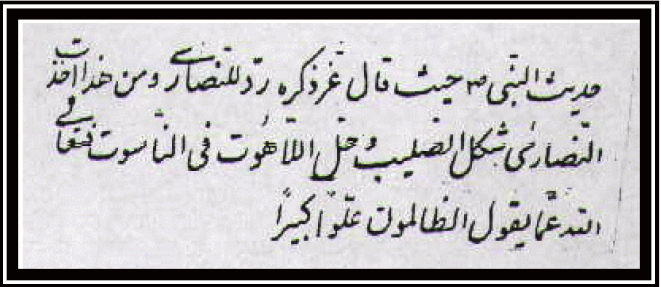
SOME PAPERS ON THE THEOLOGY AND THEOPHANOLOGY OF THE BAB
- Some notes on the Arabic term Mashiyya and associated Cosmogonical-theological hypostases in Shī`ī-Shaykhī and Bābī-Bahā'ī literarures.

SELECT ZIYARAT-NAMAH (VISITATION TEXTS) OF THE BAB AND BAHA'-ALLAH.
-
The Ziyarat-Namah for the al-Nuqta (the "Point"- the Bab himself) and the Huruf al-Hayy (Letters of the Living). Ms. 6007C 201-211. Arabic text and Translation.

-
A Ziyarat-Namah of the Baha'-Allah for Mulla Husayn Bushru'i (d. c. 2nd Feb. 1849).

-
A Ziyarat-Namah of the Bab for Mulla Muhammad `Ali Barfurushi, Quddus (d. c. 16th May, 1849).

♦




